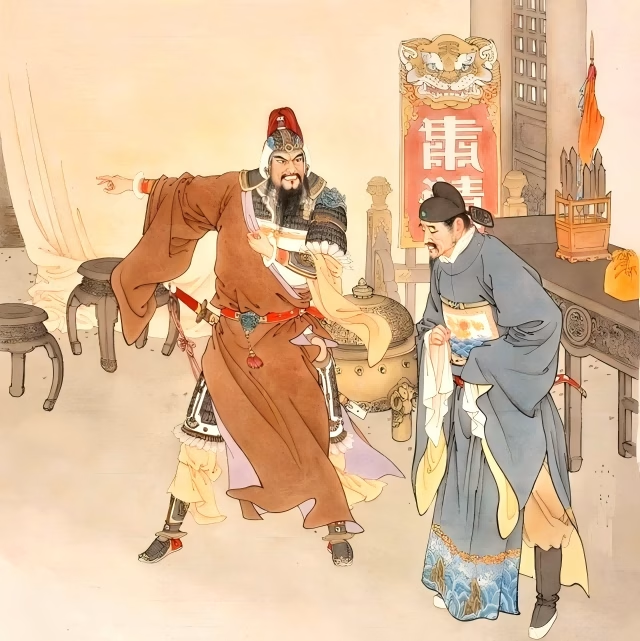Zhang Xianzhong, a native of Yan’an, was literate. In 1650, the third year of the Chongzhen reign, he launched an uprising in Yan’an, Shaanxi, occupying Shibazhai Village and proclaiming himself the “Eight Great Kings.”
After capturing Chengdu, Zhang Xianzhong ascended the throne and became emperor there.
Two Ballads Related to Treasure
Zhang Xianzhong’s reign was short-lived. In July 1646, the Qing army attacked Sichuan, forcing Zhang Xianzhong to withdraw from Chengdu.
Underwater Treasure
Before retreating, Zhang Xianzhong, at the expense of enormous manpower, built a high embankment across the Jinjiang River, which flows through Chengdu. However, this was not to control flooding. Instead, he dug a pit several feet deep in the mud and sand downstream of the embankment, where he buried tens of thousands of looted treasures.
Then he breached the embankment again, flooding the treasure pit—an act known as “water burial.”
It is said that Zhang Xianzhong left behind a “treasure map.” He buried the looted gold and silver somewhere in Chengdu, using a stone ox and a stone drum as hidden markers. For years, a children’s rhyme in Chengdu sang: “Stone ox and stone drum, worth five million silver. Whoever deciphers the secret can buy out the entire city of Chengdu!”
A folk song may conceal a suspenseful treasure secret. For a long time, many people have harbored the delusion of “buying out the entire city of Chengdu,” yet struggled to uncover the secret.
Treasure Map
In the late Qing Dynasty, a tribute student named Yang Bailu learned of this astonishing secret. In his later years, he shared it with his good friend Ma Kunshan and gave him a priceless “treasure map.”
Ma Kunshan, overjoyed, hired workers, ordered metal detectors, and other necessary equipment, and set to work with great enthusiasm.
A few days later, a large stone ox and a large stone drum were indeed unearthed! The manager declared, “Now that the stone ox and the stone drum are out, how can ‘Wan Wan Wu’ escape?”
Soon, more thrilling “good news” arrived: a metal detector set up next to the pit began to beep. No gold or silver, so where did the noise come from?
Soon, a wave of enthusiasm swept across Chengdu. An emergency meeting was immediately held, and a large number of baskets and shoulder poles were prepared and a crane was ordered. The plan was to transport the gold and silver as soon as they were unearthed and deposit them directly in a bank.
However, history plays a trick on us. Instead of gold and silver, the workers painstakingly unearthed three large baskets of small copper coins.
A Different Nursery Rhyme
In Jiangkou Town, Pengshan County, people discovered that there were also songs about treasure, giving rise to a second version of the mystery of the sunken treasure. The locals sing, “Stone dragon facing stone tiger, five million in gold and silver, whoever can decipher it can buy it and live in Chengdu.”
The difference is that the stone ox and stone drum are replaced by a stone dragon and a stone tiger, but the format of the ballad is exactly the same. Why is there a ballad similar to the one on the Jinjiang stele in Jiangkou Town? Is it just a coincidence?
In Shilonggou, Jiangkou Town, a stone dragon and a stone tiger face each other from afar. Shilonggou is located on Shipan Mountain in Jiangkou Town, where a stone stele stands. The ballad inscribed with “Stone Dragon Facing Stone Tiger” appears at the end of a winding mountain road, where a stone dragon stands proudly on the rock face.
For over 500 years, the legend of Zhang Xianzhong’s sunken silver in Jiangkou Town has lingered in mystery. The vast fortune mentioned in the ballad has yet to be fully uncovered. Just how much was this fortune, and could it be found elsewhere? It truly captivates the imagination!


Leave a Reply